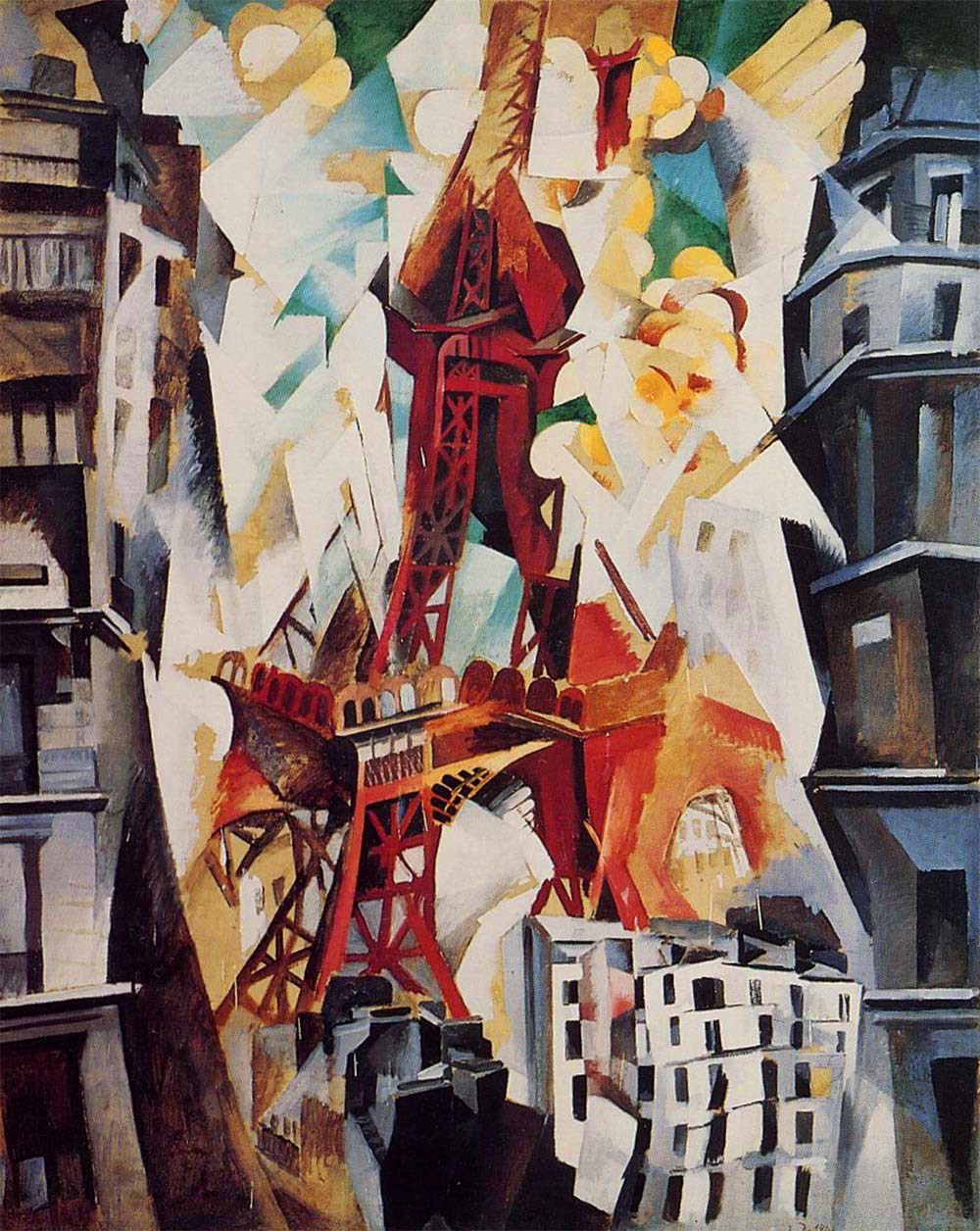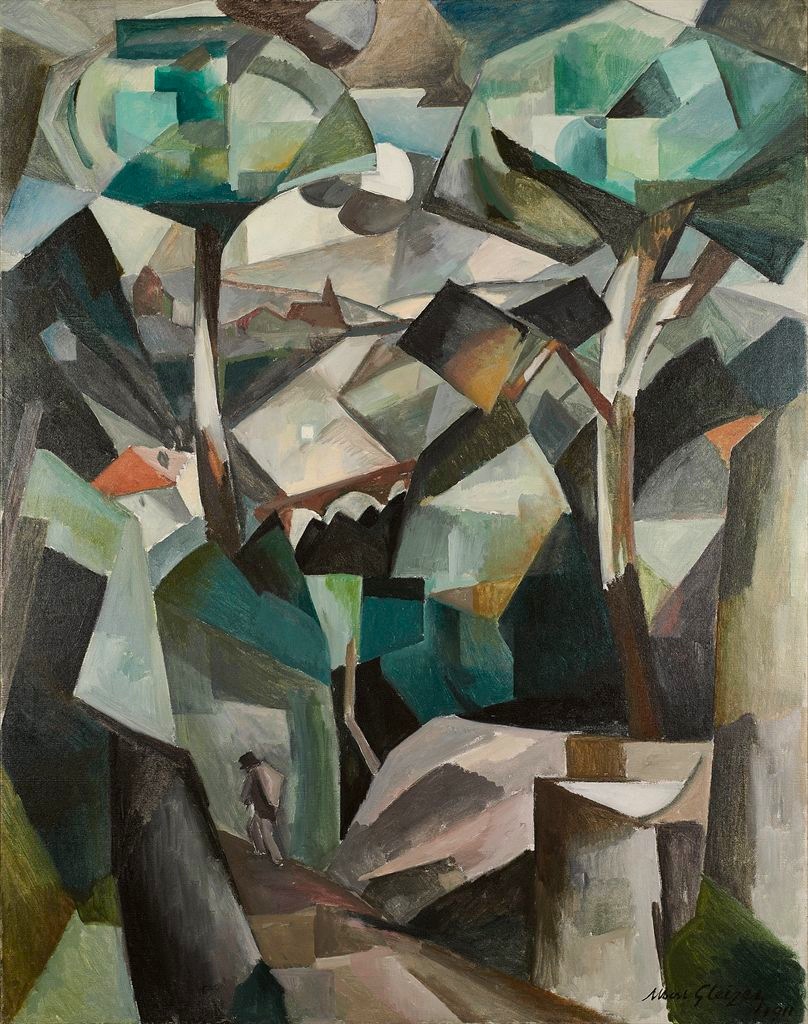|
La Femme Aux Phlox (gleizes)
''La Femme aux Phlox'', also known as ''Woman with Phlox'' or ''Woman with Flowers'', is an oil painting created in 1910 by the French artist and theorist Albert Gleizes (1881–1953). The painting was exhibited in Room 41 at the Salon des Indépendants in the Spring of 1911 (no. 2612); the exhibition that introduced Cubism as a group manifestation to the general public for the first time. The complex collection of geometric masses in restrained colors exhibited in Room 41 created a scandal from which Cubism spread throughout Paris, France, Europe and the rest of the world. It was from the preview of the works by Gleizes, Jean Metzinger, Henri Le Fauconnier, Robert Delaunay, and Fernand Léger at the 1911 Indépendants that the term 'Cubism' can be dated. ''La Femme aux Phlox'' was again exhibited the following year at the Salon de la Section d'Or, Galerie La Boétie, 1912 (no. 35). ''La Femme aux Phlox'' was reproduced in '' The Cubist Painters, Aesthetic Meditations (Les Peintre ... [...More Info...] [...Related Items...] OR: [Wikipedia] [Google] [Baidu] |
Albert Gleizes
Albert Gleizes (; 8 December 1881 – 23 June 1953) was a French artist, theoretician, philosopher, a self-proclaimed founder of Cubism and an influence on the School of Paris. Albert Gleizes and Jean Metzinger wrote the first major treatise on Cubism, ''Du "Cubisme"'', 1912. Gleizes was a founding member of the Section d'Or group of artists. He was also a member of ''Der Sturm'', and his many theoretical writings were originally most appreciated in Germany, where especially at the Bauhaus his ideas were given thoughtful consideration. Gleizes spent four crucial years in New York, and played an important role in making America aware of modern art. He was a member of the Society of Independent Artists, founder of the Ernest-Renan Association, and both a founder and participant in the Abbaye de Créteil. Gleizes exhibited regularly at Léonce Rosenberg's ''Galerie de l’Effort Moderne'' in Paris; he was also a founder, organizer and director of Abstraction-Création. From the mid-1 ... [...More Info...] [...Related Items...] OR: [Wikipedia] [Google] [Baidu] |
Louis Vauxcelles
Louis Vauxcelles (born Louis Meyer; 1 January 187021 July 1943) was a French art critic. He is credited with coining the terms '' Fauvism'' (1905) and ''Cubism'' (1908). He used several pseudonyms in various publications: Pinturrichio, Vasari, Coriolès, and Critias. Fauvism Vauxcelles was born in Paris. He coined the phrase 'les fauves' (translated as 'wild beasts') in a 1905 review of the Salon d'Automne exhibition to describe in a mocking, critical manner a circle of painters associated with Henri Matisse. As their paintings were exposed in the same room as a Donatello sculpture of which he approved, he stated his criticism and disapproval of their works by describing the sculpture as "a Donatello amongst the wild beasts." Henri Matisse's '' Blue Nude (Souvenir de Biskra)'' appeared at the 1907 Indépendants, entitled ''Tableau no. III''. Vauxcelles writes on the topic of ''Nu bleu'': I admit to not understanding. An ugly nude woman is stretched out upon grass of an opaque ... [...More Info...] [...Related Items...] OR: [Wikipedia] [Google] [Baidu] |
Marie Laurencin
Marie Laurencin (31 October 1883 – 8 June 1956) was a French painter and printmaker. She became an important figure in the Parisian Avant-garde#:~:text=The avant-garde (/ˌ,art, culture, or society., avant-garde as a member of the Cubism, Cubists associated with the Section d'Or. Biography Laurencin was born in Paris, where she was raised by her mother and lived much of her life. At 18, she studied porcelain painting in Sèvres. She then returned to Paris and continued her art education at the Académie Humbert, where she changed her focus to oil painting. During the early years of the 20th century, Laurencin was an important figure in the Parisian avant-garde. A member of both the circle of Pablo Picasso, and Cubists associated with the Section d'Or, such as Jean Metzinger, Albert Gleizes, Robert Delaunay, Henri le Fauconnier and Francis Picabia, exhibiting with them at the Salon des Indépendants (1910-1911) and the Salon d'Automne (1911-1912), and Galeries Dalmau (1912) at th ... [...More Info...] [...Related Items...] OR: [Wikipedia] [Google] [Baidu] |
Café De La Rotonde
The Café de la Rotonde is a famous café in the Montparnasse Quarter of Paris, France at 105 Boulevard du Montparnasse, known for its artistic milieu and good food. In its official website, La Rotonde defines itself as a brasserie and restaurant. Located on the Place de Picasso, that also holds the sculpture of Honoré de Balzac by Auguste Rodin called Monument to Balzac at the corner of Boulevard du Montparnasse and Boulevard Raspail, it was founded by Victor Libion in 1911. Based on examples established by La Closerie des Lilas (created in 1847) and Le Dôme Café (created in 1898), La Rotonde, along with La Coupole (created in 1927) and Le Select (created in 1925), was renowned as an intellectual gathering place for notable artists and writers during the interwar period due to its open atmosphere and reasonable prices. Unlike many establishments in Montparnasse, La Rotonde (now called La Rotonde Montparnasse) has retained much of its bohemian charm and continues in operation ... [...More Info...] [...Related Items...] OR: [Wikipedia] [Google] [Baidu] |
Le Dôme Café
Le Dôme Café () or Café du Dôme is a restaurant in Montparnasse, Paris that first opened in . Based on the example established by La Closerie des Lilas (created in 1847) and followed by Café de la Rotonde (created in 1911), Le Select (created in 1925), and La Coupole (created in 1927), Le Dôme was renowned as an intellectual gathering place for artists and writers during the interwar period. Le Dôme created and disseminated gossip and provided message exchanges and an 'over the table' market that dealt in artistic and literary futures. It was frequented by painters, sculptors, writers, poets, models, art connoisseurs and dealers. Le Dôme later became the gathering place of the American literary colony and became a focal point for artists residing in Paris's Left Bank. A poor artist used to be able to get a Saucisse de Toulouse and a plate of mashed potatoes for $1. Today, it is a top fish restaurant (the ''Michelin Guide'' once gave it one star), with a comfortably ol ... [...More Info...] [...Related Items...] OR: [Wikipedia] [Google] [Baidu] |
French Parliament
The French Parliament (french: Parlement français) is the bicameral legislature of the French Republic, consisting of the Senate () and the National Assembly (). Each assembly conducts legislative sessions at separate locations in Paris: the Senate meets in the and the National Assembly convenes at . Each house has its own regulations and rules of procedure. However, occasionally they may meet as a single house known as the Congress of the French Parliament (), convened at the Palace of Versailles, to revise and amend the Constitution of France. History and name The French Parliament, as a legislative body, should not be confused with the various parlements of the Ancien Régime in France, which were courts of justice and tribunals with certain political functions varying from province to province and as to whether the local law was written and Roman, or customary common law. The word "Parliament", in the modern meaning of the term, appeared in France in the 19th ... [...More Info...] [...Related Items...] OR: [Wikipedia] [Google] [Baidu] |
Henri Rousseau
Henri Julien Félix Rousseau (; 21 May 1844 – 2 September 1910) at the Guggenheim was a French post-impressionist painter in the Naïve or Primitive manner. He was also known as Le Douanier (the customs officer), a humorous description of his occupation as a toll and tax collector. He started painting seriously in his early forties; by age ... [...More Info...] [...Related Items...] OR: [Wikipedia] [Google] [Baidu] |
André Mare
Charles André Mare (1885–1932), or André-Charles Mare, was a French painter and textile designer, and co-founder of the Company of French Art (''la Compagnie des Arts Français'') in 1919. He was a designer of colorful textiles, and was one of the founders of the Art Deco movement. As a soldier in the French Army in World War I, Mare led the development of military camouflage, painting artillery using Cubism techniques to deceive the eye. His ink and watercolour painting ''Le canon de 280 camouflé'' (The Camouflaged 280 Gun) shows the close interplay of abstract art and military application at that time. He authored the book ''Cubisme et Camouflage'', 1914–1918. Mare sketched and painted scenes based on his experiences in World War I. His works include: ''American Troops Marching Through the Arch of Triumph'', 1930, and ''The Funeral of Marshal Foch'', 1931. After the war Mare combined his talents with the skills of architect Louis Sue and became a leader in the Art Deco ... [...More Info...] [...Related Items...] OR: [Wikipedia] [Google] [Baidu] |
André Dunoyer De Segonzac
André Dunoyer de Segonzac (6 July 1884 – 17 September 1974) was a French painter and graphic artist. Biography Segonzac was born in Boussy-Saint-Antoine and spent his childhood there and in Paris. His parents wanted him to attend the military academy of Saint-Cyr but, recognizing his strong interest in drawing, they agreed to his enrollment at the Free Academy of Luc-Olivier Merson. Merson's academic style of instruction did not suit Segonzac, however, and, following a period of military service, he studied at the Académie de La Palette, whose staff included Jacques Émile Blanche (he would later teach at La Palette with Jean Metzinger and Henri Le Fauconnier). Soon giving this up in favor of an independent course, free of any masters, he later cited 1906 as the starting date of his artistic career. His first submission to the Salon d'Automne was in 1908; the next year he exhibited at the Salon des Indépendants, and for the next several years he exhibited regularly at both. ... [...More Info...] [...Related Items...] OR: [Wikipedia] [Google] [Baidu] |


.jpg)


